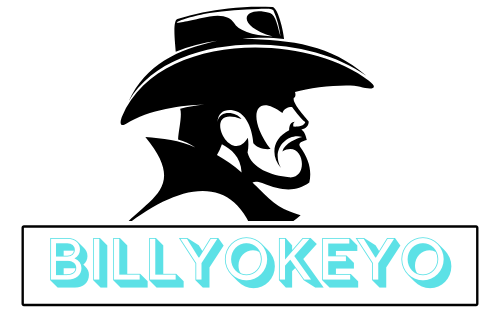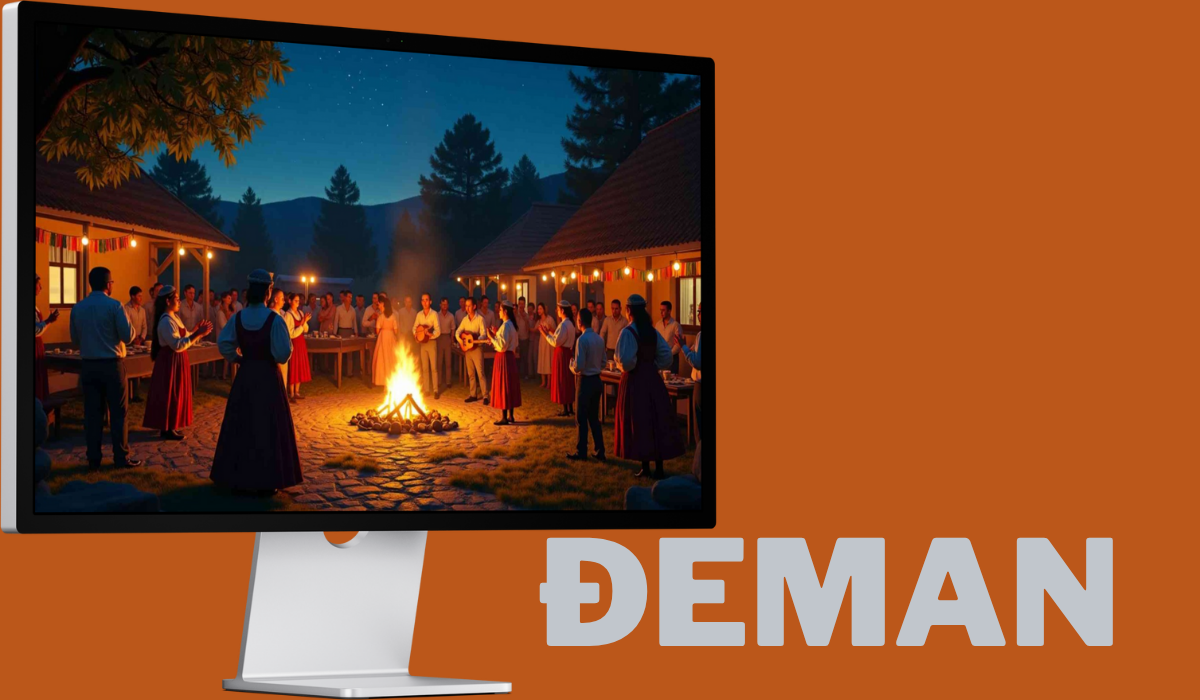We live in a world obsessed with the visible. We document our lives on screens, we build monuments of steel and glass, and we trust only what we can measure with our instruments. Yet, in the quiet corners of human experience, in the folklore of distant villages and the whispered stories passed down through generations, there exists a concept that challenges this material certainty. It’s a word you won’t find in most mainstream dictionaries, but one that carries the weight of centuries: the đeman.
This isn’t a story about monsters under the bed or specters in the attic. The đeman is something far more subtle, more intricate, and in many ways, more profoundly connected to the human condition. To understand it is to embark on a journey into the landscape of fate, luck, and the invisible threads that are said to bind our lives together.
What in the World is a Đeman?
Let’s start by untangling the word itself. Pronounced roughly as “jeh-mahn,” with a soft, almost silent ‘d,’ its roots are deeply embedded in the rich soil of Slavic, particularly South Slavic, folklore. You might hear it in Serbia, Bosnia, Croatia, or other parts of the Balkans, often spoken with a knowing look, a resigned sigh, or a cautious tone.
A đeman is not a ghost, nor is it a demon in the Judeo-Christian sense. It’s not a creature you can banish with a crucifix or holy water. Instead, think of it as a personal, innate force—a kind of metaphysical fingerprint that dictates one’s relationship with luck, fortune, and destiny. Some are born with a “good” đeman, blessed with an almost supernatural knack for being in the right place at the right time. Others, however, are said to be followed by a “bad” or “heavy” đeman, a persistent aura of misfortune that can affect not just them, but everything and everyone they touch.
Imagine two farmers living side by side. One, despite average effort, always has the best yields, his cows are the healthiest, and his roof never leaks in a storm. The other, who works from dawn until dusk, is constantly battling blight, sick animals, and hailstorms that seem to target only his field. In the old language of the village, the first farmer has a light đeman; the second is weighed down by a heavy one.
This force is often described as being attached to a person from birth. It’s not something you choose; it’s something you are. It’s your unique, spiritual lot in life.
The Many Faces of Fate: Đeman in Daily Life and Lore
The concept of the đeman manifests in countless ways, weaving itself into the fabric of everyday life and extraordinary events.
The Jinx and the Lucky Charm: The most common modern interpretation of a person with a bad đeman is that of a jinx. You know the type—the friend you hesitate to bring on a fishing trip because the moment they step on the boat, the fish stop biting. The colleague whose mere presence seems to cause computers to crash and projects to go awry. It’s not that they are intentionally causing trouble; it’s that their inherent energy, their đeman, brings a wave of chaotic misfortune.
Conversely, someone with a good đeman is a walking lucky charm. Their lottery tickets are more likely to be winners, they always find a parking spot in a crowded city, and their businesses flourish against all odds. People are naturally drawn to them, sensing the benevolent shadow their đeman casts.
The Đeman and the Hearth: The influence of a đeman was believed to be particularly potent within the home. A person with a heavy đeman could be seen as a threat to the household’s prosperity. There are old tales of new brides being scrutinized not just for their character and strength, but for the quality of their đeman. Bringing someone with a “heavy” fate into the family could, it was feared, sour the milk, spoil the harvest, or bring illness to the children. This belief, while harsh, underscores how deeply the community’s welfare was tied to the unseen forces its members carried.
A Force of Nature: The đeman wasn’t always confined to human affairs. It could be attached to places, objects, or even times of the year. A field that never yielded a good crop, no matter who farmed it, was said to have a bad đeman. A house where tragedy repeatedly struck was considered to be built on land with a heavy đeman. This animistic view acknowledges that luck and energy aren’t just human attributes but are woven into the very world around us.
Beyond Superstition: The Psychological Roots of the Đeman
To dismiss the đeman as mere superstition is to miss its deeper psychological and sociological significance. This ancient concept is a powerful narrative tool that humans have used for millennia to explain the unexplainable—the brutal randomness of life.
Before we understood genetics, microbiology, or the complex chains of cause-and-effect in economics and sociology, the đeman served as a compelling explanation for why some people thrive and others struggle. It answered the agonizing question: “Why me?” When a plague swept through a village, sparing one family and decimating the next, it was easier to attribute it to the whims of an unseen force like the đeman than to accept the terrifying arbitrariness of disease.
Furthermore, the concept of the đeman provides a framework for personal responsibility that is distinct from moral failure. If you have a run of bad luck, it isn’t necessarily because you are a bad person who deserves punishment. It might just be your đeman. This can be a strangely comforting thought, externalizing failure and insulating one’s self-worth from life’s inevitable downturns. It’s not you; it’s the shadow you were born with.
On the flip side, it can also foster a sense of powerlessness. If your đeman is truly set in stone, what’s the point of striving for change? This fatalistic aspect reveals the double-edged sword of such beliefs. They can offer solace in hardship, but they can also stifle agency and growth.
The Đeman in the Modern World: Do We Still Believe?
You might think that in our age of science and reason, concepts like the đeman have faded into obscurity. But look closer, and you’ll see its echoes everywhere. We may have abandoned the old word, but we haven’t abandoned the idea.
We now talk about “luck,” “fortune,” and “karma.” We describe people as being “born under a lucky star” or having a “black cloud” hanging over them. We are fascinated by concepts like the “law of attraction,” which is, in many ways, a modern, self-help version of cultivating a good đeman—the belief that by focusing on positive or negative thoughts, we can bring positive or negative experiences into our lives.
In the corporate world, you might hear of a executive with a “Midas touch,” someone whose mere involvement seems to guarantee a project’s success. Is that not a modern, boardroom-friendly label for a powerful, positive đeman? Conversely, we’ve all heard of someone who is “jinxed” in their career, always landing in companies right before they downsize or launching products just as the market shifts.
Our obsession with sports superstitions is another clear descendant. A baseball pitcher who must wear the same unwashed socks for a winning streak, a footballer who must step onto the pitch with his right foot first—these are rituals designed to appease or align with whatever unseen force, whatever personal đeman, governs their performance.
So, no, we haven’t stopped believing. We’ve just repackaged the đeman in contemporary language.
Living with Your Đeman A Contemporary Perspective
If we accept that the idea of the đeman—this inherent predisposition for a certain flavor of fortune—is a persistent part of the human psyche, how do we live with it wisely? Embracing it as a literal, unchangeable destiny can be crippling. Dismissing it entirely ignores the very real patterns we observe in our own lives and the world.
Perhaps the healthiest approach is to see the đeman not as a fixed sentence, but as a starting point—the spiritual and emotional hand we are dealt at birth.
1. Acknowledge Your Patterns: The first step is honest self-observation. Do you have a pattern of attracting certain types of negative situations? Do you have a natural talent for creating opportunity? This isn’t about superstition; it’s about understanding your own tendencies. Someone with a “heavy” đeman might notice they have a habit of negative self-talk or catastrophic thinking, which in turn creates self-fulfilling prophecies of failure. Recognizing this is the first step toward changing it.
2. Cultivate Your Garden: Folklore often provided ways to “lighten” a heavy đeman. These usually involved rituals, charms, or acts of great kindness. While we can skip the more superstitious elements, the core idea is sound: we can influence our “luck” through conscious action. If your đeman feels heavy, cultivate positivity. Practice gratitude. Take calculated risks instead of assuming you’ll fail. Surround yourself with supportive people. These actions won’t change the past, but they can fundamentally alter the trajectory of your future, effectively “lightening” your load.
3. Understand the Ripple Effect: The old belief that a đeman could affect an entire household is a profound reminder of our interconnectedness. Your energy, your attitude, and your actions have a ripple effect on your family, your workplace, and your community. Taking responsibility for your own “energy”—for working on your resilience, your kindness, and your outlook—is one of the most powerful things you can do. It’s a way of honing your đeman to be a force for good, not just for yourself, but for your entire “village.”
4. Embrace the Mystery: Finally, the đeman invites us to embrace a little mystery. Life is not a simple equation of effort in and success out. There is an X-factor, a element of chance and serendipity that we cannot control. Calling this force the đeman is a way of giving it a name, of acknowledging its presence without being enslaved by it. It allows for the possibility of grace, of unexpected blessings that we did not earn, and of hardships that we do not deserve.
The Final Thread
The đeman is more than a forgotten folkloric ghost. It is a timeless archetype, a character in the oldest story humanity tells itself: the story of why our lives unfold the way they do. It speaks to our deep-seated need to find pattern in chaos, meaning in suffering, and a name for the silent, unseen companion that walks beside each of us from birth to death.
Whether we call it đeman, luck, fate, or fortune, this concept endures because it touches a fundamental truth. Our lives are shaped by a complex interplay of choice, chance, and circumstance. Some of it we can control; much of it we cannot. The wisdom lies not in definitively proving the đeman’s existence, but in understanding the role the idea of it plays in our lives. It can be a cage that confines us to a predetermined story, or it can be a catalyst for deeper self-awareness and a more mindful engagement with the unpredictable, beautiful, and often mysterious journey of being human.
So the next time you have a streak of inexplicably good luck, or a run of frustrating bad breaks, pause for a moment. Think of the đeman. It’s a reminder that there is always more to our story than what meets the eye, an unseen thread woven into the tapestry of who we are. And perhaps, in that acknowledgment, we find not fear, but a deeper connection to the grand, enigmatic narrative of life itself.





